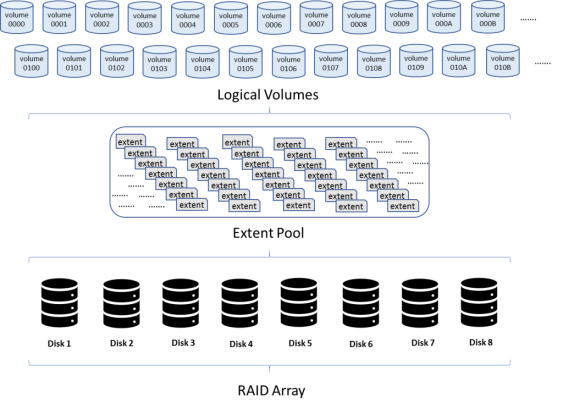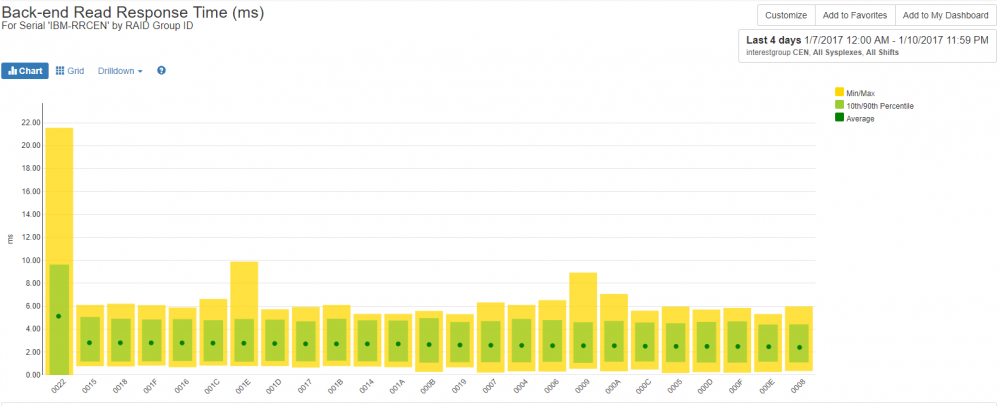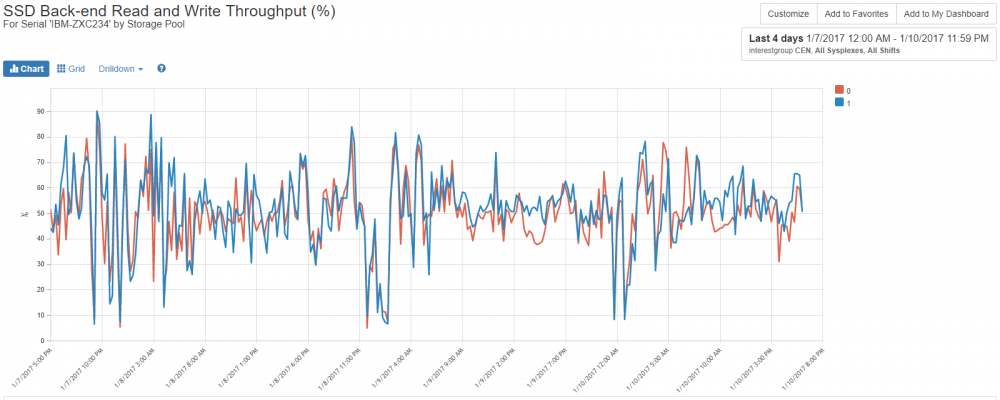Monitor Logical Workloads & Physical Disk Hardware
IntelliMagic Vision provides the Intelligence needed to understand how logical workloads behave on your physical hardware.
Prevent risks, save time, and optimally configure your environment.
Automatically Map the Logical to Physical Transfer
As storage technology has moved forward and capacities have increased, the one-to-one relationship between volumes and disk drives has broken down. If you find elevated response time on a logical volume, how do you know which physical drives may be causing it?
IntelliMagic Vision provides insight into the relationships between the physical and logical resources as well as the necessary performance measurements so that users can understand imbalances between the Volumes, Pools and supporting drives or RAID groups.
Get full transparency to physical resources supporting the logical entities, such that root causes are easily found.
With this solution, you will be able to:
- Easily map logical volumes to physical drive pools
- Detect imbalances that may be affecting performance
- Verify that valuable flash storage resources are being properly exploited
Additionally, health and performance ratings based on IBM best practices automatically detect risks in your Disk environment and direct you to important issues that may warrant your attention.
IntelliMagic Vision offers you the out-of-the-box visibility and seamless navigation to manage every component of your z/OS infrastructure under a single solution.
Logical Volume Mapping
Storage systems map many logical volumes to other logical constructs that may be referred to as extent pools or disk groups or policies. The pools are composed of extents which are formatted chunks of space spread across many disks or RAID groups as shown in the picture below.
In these types of implementations, the data for each logical volume is typically spread over many or all physical disks in the pool. Each pool is based on multiple physical disks and may consist of multiple RAID arrays. This means that a single logical disk should not cause a single physical disk to become very busy. Because physical disks can be very large, very many logical volumes are mapped to one group.
The resulting I/O density for the underlying physical disks may cause problems, especially with bad cache locality (data bases) or with high write data rates (batch workloads).
Avoid Disk Imbalances
To avoid such problems, it is very important to balance the workload equally over all the disks in a disk system. Without this balance, you will not be able to exploit all the potential that the hardware offers, and performance bottlenecks may occur.
IntelliMagic Vision provides insight into the relationships between the physical and logical resources as well as the necessary performance measurement so that users can understand imbalances between the volumes, pools and supporting drives or RAID groups.
The chart below is an example of an IntelliMagic Vision balance chart. It shows that one RAID array in this storage pool is imbalanced in terms of read response time. This could indicate a physical problem with a disk drive in the array or more likely that this RAID array is overloaded.
Manage Auto-Tiering
More recently, storage vendors have incorporated auto-tiering into their design. This means that extent pools have become even more complex as they now may consist of multiple tiers of disk or flash storage. Each extent will typically be tied to a particular tier but a logical volume may include extents that reside on various storage tiers.
IntelliMagic Vision can give you a view of how logical volumes are using the various storage tiers in an auto-tiering environment. This can help you assure that your flash capacity is being used as effectively as possible. The chart below illustrates how IntelliMagic Vision can tell you how much volume activity is distributed to the flash devices on a storage system.
zSystems Performance Management
Optimize z/OS Mainframe Systems Management with Availability Intelligence
Benefits
Db2 Performance Management
Prevent Availability Risks and Optimize Db2 Performance
Benefits
Easy visibility into key Db2 metrics through SMF records is crucial to proactively prevent availability risks and to effectively manage and optimize performance.
CICS Performance Management
Monitor and Profile CICS Transactions and Regions with IntelliMagic Vision
Benefits
IntelliMagic Vision enables performance analysts to manage and optimize their z/OS CICS transactions more effectively and efficiently, as well as proactively assess the health of their CICS regions.
Virtual Tape Performance Management
Proactively Manage Virtual and Physical Tape Environments
Benefits
IntelliMagic Vision enables performance analysts to manage and optimize their z/OS Virtual Tape environments more effectively and efficiently.
Disk & Replication Performance Management
Automatically Detect Disk Performance Risks & Quickly Resolve Issues
Benefits
IntelliMagic Vision enables performance analysts to manage and optimize their z/OS Disk and Replication environment more effectively and efficiently.
MQ Performance Management
Optimize and Analyze MQ Activity and Performance
Benefits
IntelliMagic Vision enables performance analysts to manage and optimize their z/OS MQ configurations and activity more effectively and efficiently, as well as proactively assess the health of their queue managers.
z/OS Network Performance Management
Automatically Monitor Mainframe Network Security and Protect Your Data
Benefits
IntelliMagic Vision automatically generates GUI-based, interactive, IBM best-practice compliant rated reports that proactively identify areas that indicate potential upcoming risk to TCP/IP health, performance, and security.
z/OS Connect: Modern Mainframe API Environment
Optimizing Mainframe API Monitoring for Improved Resource Management
Benefits
Book a Demo or Connect With an Expert
Discuss your technical or sales-related questions with our mainframe experts today


